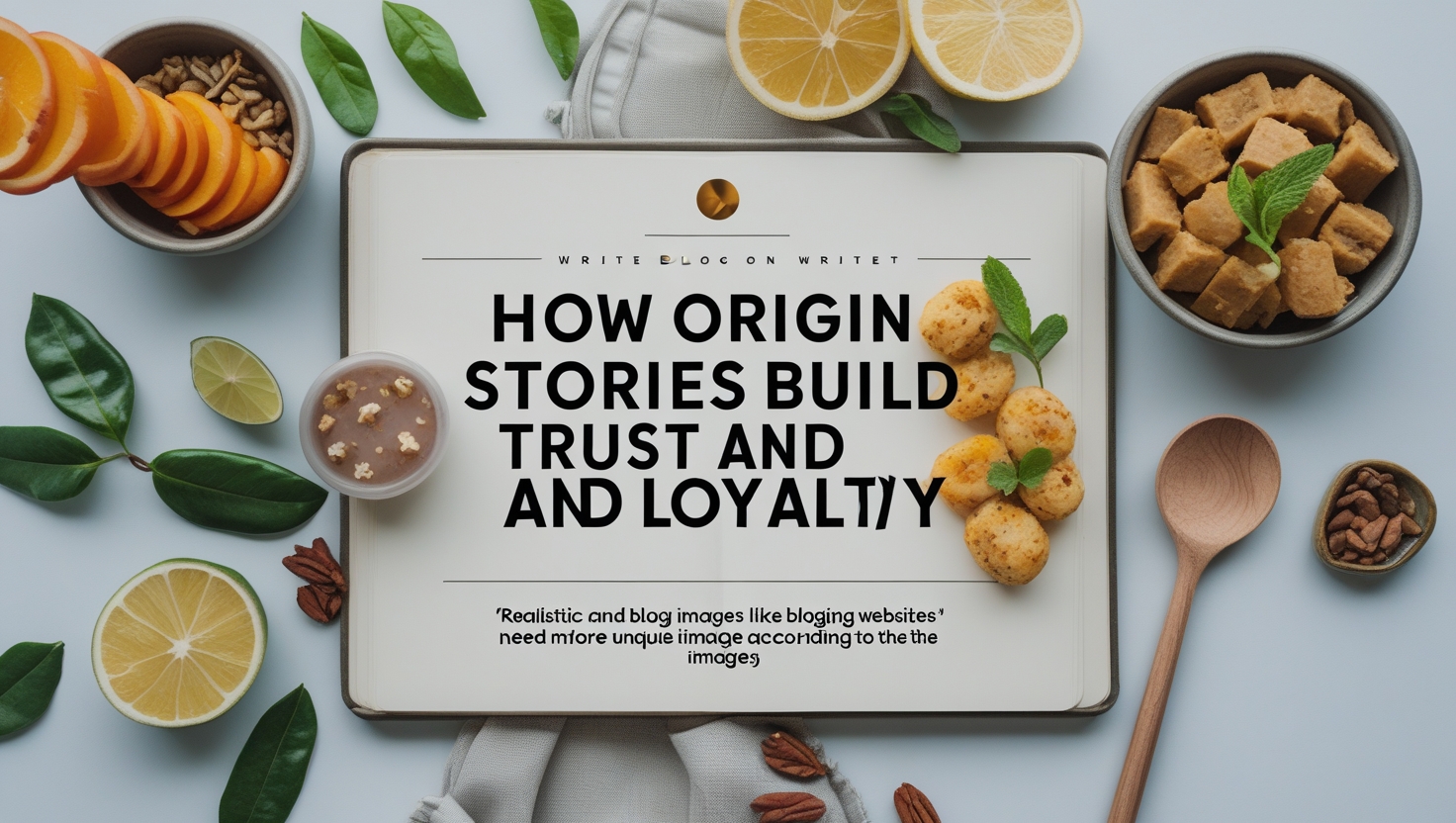Today, many food brands do not only do well based on the taste, but the story behind them. You may know that Ben & Jerry had a humble beginning as a small scoop shop in a converted gas station. The brand told the tales of friendship, fair trade sources, and social causes. This made customers attach themselves to a higher cause besides ice cream.
So, people do not simply purchase goods in the food industry. They purchase purpose, association and credibility. Storytelling assists you in creating a much better connection with your viewers. A Sprout Social report shows that 64% of consumers desire to have their brands relate to them on emotional grounds. This is particularly so in the food world, where memories seem to be attached to meals in most instances.
From my experience writing for food brands and small businesses, I’ve seen that a strong brand story often leads to more loyal customers. When your audience understands where your food comes from and why you care, they begin to care too.
Contents
What Is a Food Brand Origin Story?
A food brand’s origin story indicates how a company was established and the reason for its existence. It provides information that reveals the passion for the product. It usually has a source of the idea, its initiator, and what principles used to make it.
A strong origin story may include:
- A founder’s background
- The roots of a special recipe
- Cultural or community influences
- Family traditions or struggles
A study by Harvard Business School found that emotionally connected customers are over 50% more valuable than satisfied ones. When you share the journey behind your product, you help people feel emotionally attached. This boosts recognition and trust.
Whether it’s a food truck born from a grandmother’s soup recipe or a vegan snack made for kids with allergies, real stories build real relationships.
Building Trust Through Authenticity
Brands gain the trust of people when they share truthful stories. They feel the need to be aware of the origin of their food. When this brand story seems natural, you will stand a better chance of being supported.
According to a Nielsen report, 73% of consumers will be ready to pay more for products of the brands that they trust. That very trust frequently starts with your narrative. As an example, a bakery that began with a mother and daughter baking pastries after school is not the bakery with the largest budget. However, when they tell that story, they identify with families, parents and other people living in the community that embrace warmth and household traditions.
Something like that is to be built up by real moments. People will listen to your story, which is based on purpose and told in an honest way.
Crafting a Compelling Origin Story
Creating your story starts with understanding your “why.” Why did you start your food business? What values matter to you? What part of your life connects to food?
Follow these steps to shape a strong origin story:
- Start with your values. Know what matters most to you.
- Share your journey. Talk about the people, places, or memories that shaped your brand.
- Be clear and honest. Avoid exaggeration. Keep it real.
- Highlight the struggle. If you have faced challenges, share them. People relate to growth.
One food entrepreneur I interviewed shared how her gluten-free granola idea started with her child’s health condition. She built the recipe in her kitchen and now ships nationwide. Her story is simple, emotional, and honest. That’s what makes it powerful.
Remember, stories are not just for the “About” page. They are the core of your brand. They define your tone and how you connect with others.
Communicating Your Story Across Channels
Telling your story once is not enough. You must share it across all the right platforms.
Use your:
- Website About Page: Give visitors a quick look at your story and values.
- Product Packaging: Add short story snippets on your packaging.
- Social Media: Post behind-the-scenes photos, videos, and founder quotes.
- Press Interviews or Blogs: Talk about your journey in media outlets.
Visual content is one of the easiest ways of memorizing your story. Display your kitchen or your family or even your farm. These images bring credibility and character.
It makes customers credible to see a similar message on your site, packaging, and Instagram. Your voice becomes clear. This continuity proves the fact that you are not trying to push a counterfeit image.
Also, consider how packaging plays a role. For example, if you use die cut mylar bags, you can print key parts of your story right on the bag. This engages customers without needing them to search for more.
Brands That Won with Storytelling
Let’s look at real examples of food businesses that used origin stories well.
Milk Bar is a dessert brand that narrates the story of its chef, Christina Tosi. She tells us how she began baking without any training in a small kitchen in New York. Her tale of entrepreneurship and grind can inspire many.
Patagonia Provision is concerned with sustainability. They also share their fishing and farming experiences in order to demonstrate the way they conserve the environment. Consequently, individuals advocate the brand on the basis of taste, as well as on the basis of purpose.
Local brands will also be able to benefit. A local honey company that tells stories about their local beekeepers might not blow up, but they can win the local market with confidence and commitment.
Storytelling Pitfalls to Avoid
While storytelling helps, it must stay real. Avoid these common mistakes:
- Making up or exaggerating facts
- Being vague or inconsistent
- Leaving out important context
- Telling a story once and never repeating it
You lose credibility when you keep going through story changes. Never fail to support it with evidence. Where possible, display pictures, names or videos. When you state that your snacks are made according to your grandmother’s recipe, present her with it. Place location and photos in case your farm is family-owned.
Consistency is key. And, transparency wins trust.
If you use packaging like custom food boxes with logo, make sure it reflects your values. A mismatch between your story and branding can harm credibility.
End: Your Story Is Your Superpower!
You are unique according to the story of your origin. It will have them see the human face of your brand. It cultivates trust, loyalty, and emotional touch. Your organization does not have to be a large one in order to adopt storytelling. There is nothing except being sincere and having a good motive behind what you do.
Begin by noting down the story of your brand. Post it to your clients. Maintain it on your site, your wrapping, and even on social networks. When you share your story, it can make a one-time consumer into a devoted patron.


